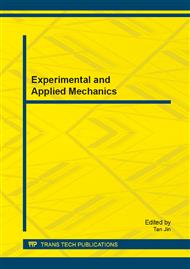p.201
p.209
p.215
p.220
p.225
p.231
p.236
p.244
p.248
Researching on the Mechanic Properties of Early-Strength Polyurethane Concrete and its Affecting Factors
Abstract:
The early-strength polyurethane concrete technology is the new outcomes of materials used in the structure engineering these years, which mixed polyurethane resin of fast concretion properties with certain combination materials to form stable organization, and it can be applied in the fast filling and surface repairing of the roads and concrete structure. According to the high standards of the aggregate used in the concrete, this paper presents a new formulation of aqueous polyurethane concrete. By comparing the effects of main parameters such as moisture content, temperature, addition etc. working on the solidification though formulations experiments and strength experiments, it was found that the solidification need different moisture content at different temperatures. It is testified that the compressive strength of this new polyurethane concrete is 22.70MPa in practical application and theres no melt and decompose phenomena after marinating for a long time in marinating experiments, which satisfied the engineering need.
Info:
Periodical:
Pages:
225-230
Citation:
Online since:
February 2014
Price:
Сopyright:
© 2014 Trans Tech Publications Ltd. All Rights Reserved
Share:
Citation:


